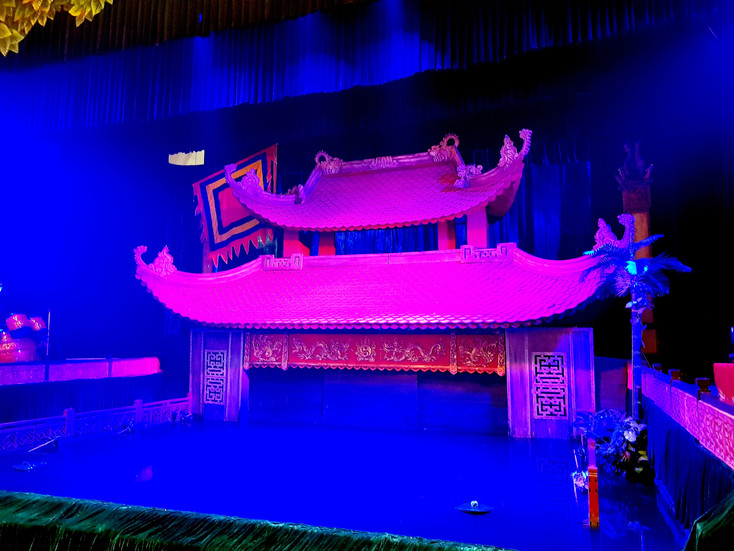Hanoi, Vietnam
- Bernd
- Jun 6, 2024
- 6 min read
Dạy khỉ trèo câỵ
One silence, nine happiness.
Germany and Vietnam are almost the same size. But with almost 97 million inhabitants, the Southeast Asian country has significantly more inhabitants. Germans do not need a visa to enter the country as long as they do not stay in the country for longer than 45 days. The day of entry or exit counts as a whole day. In addition to your passport, which must be valid for at least 6 months upon entry, you must present an onward or return flight ticket that is within the valid travel period.

Anyone who reads my blogs regularly knows that I have a weakness for Asian countries. They are so pleasantly different. And by that I don't just mean the writing, which is illegible for us. Admittedly, for us tourists, Asia is very multifaceted, chaotic, exotic, lively, full of strange smells, with each of the countries having its own peculiarities. In this sense, Vietnam is also the first Asian country that shaped my childhood through the images from the Vietnam War. My trip in 2019 will therefore be to Hanoi. It is the capital of Vietnam and, with 6.6 million inhabitants, the second largest city in the country.
Oi, Oi, Hanoi

When exploring, I mainly focus on the old town and the area around the 700 m long Hoan Kiem Lake, also known as Sword Lake. It separates Old Hanoi from the former French colonial quarter. Here you will find everything a big city has to offer. And at night, the area around the lake changes its face. In the evening, the road is closed to vehicles. Lovers and families with small children stroll around the lake under colorful lights.
Past cafes, street food stalls, romantic restaurants, bars, locals playing chess together, tourists marveling at life and everyone wanting to capture the moment forever with their cameras. The evenings are pleasantly warm. There are small food stalls set up everywhere and small stools in front of them invite you to linger. I walk around the lake, mingle with the people who keep staring at me because my 1.93 m body stands out from the crowd. An exotic figure. Some ask me if they can take a photo with me, true to the motto: The beauty and the lanky guy.

A turtle that was recovered from the lake in the 1960s weighed 250 kg. The turtle is on display in the Jade Mountain Temple, which was built in the middle of the lake. You can reach the temple via the red curved wooden bridge, The Huc Bridge. There are legends surrounding the lake and the temple. According to legend, a giant turtle gave the fisherman Le Loi a magical sword that made him invincible. With this sword he defeated the Chinese occupiers of the Ming Dynasty in the 15th century and was named king. In gratitude, Le Loi had a three-story turtle tower built in the middle of the lake. It is still the landmark of Hanoi today.
Make theatre

A very special event is the water puppet theatre in Hanoi, at the northern end of the lake: 57B P. Đinh Tiên Hoàng, Hàng Bạc, Hoàn Kiếm, Hà Nội. Apparently this art form has only existed in Vietnam since the 11th century. What is special about it is the small orchestra that provides live musical accompaniment to the performance. The puppeteers stand in a pool of water, behind a bamboo curtain, and move the figures, which weigh up to 5 kg, with rods and strings. The seats and row spacing are a little too narrow for me, but the performance with the accompanying live music is a cultural delight.
The stories tell of the many myths and legends in Vietnam: of fire-breathing dragons, of eternal love and the battle between good and evil. Or simply of everyday life. The depiction of the aforementioned King Le Loi, who drove out the Chinese occupiers, is also popular. Even without any knowledge of the language, you can understand the artistic performance in broad terms.
A free dose of adrenaline
Forget the expensive temptation of bungee jumping. There is a really cheaper alternative: cross one of the many completely overcrowded streets in Hanoi, preferably during rush hour. An avalanche of bicycles, scooters, motorcycles and cars that are constantly moving rolls towards you! Your task: cross the side of the street without being run over. How is that supposed to work? My example refers to the area around the lake.

I've tried it several times successfully, without any traffic lights, which nobody pays attention to anyway. The principle is simple but phenomenal. I'd almost like to say it's fun. But we don't want to exaggerate.
An elderly couple stands desperately at the side of the road, surprised that no one is paying attention to the pedestrian crossing. They look at me uncertainly. I smile at them benevolently. The traffic is an insurmountable, raging river. The couple follows me with bold steps. I maintain eye contact with the moped drivers.
Solution: Walk at a steady pace. Maintain eye contact with the drivers. As if by a miracle, they move out of my way without us touching. Here, everyone is paying attention to each other. We reach the other side of the road safe and sound and relieved.
Lung gold

In the old town, not far from my hotel, I unexpectedly find what I'm looking for. It's a recurring theme in all my travels. A shisha bar that I can't possibly pass by. The owner is a young Vietnamese woman. At least I think she's the owner. As best as our language skills allow, we make small talk. Business is bad, she says. But business is always bad. "Not anymore," I answer her and order a shisha with the double apple flavor. Or was it Stairways to Heaven? I can't remember. It's the ideal place for tourists to slow down. The street isn't too loud.

Opposite me is a beautifully lit old hotel building. What a visual delight. Cyclists and a few mopeds pass me by. Pedestrians and street vendors look for destinations and opportunities. Cafés and restaurants serve their chatty guests. The events of the day pass me by. I changed hotels because the existing room safe didn't work and wasn't repaired. I have little desire to wander the streets of Hanoi with all my documents, credit cards and cash. No big deal, just a cost-risk assessment.

I also visited the Vietnam Military History Museum: Bảo tàng Lịch sử Quân sự Việt Nam. It is located in the center of Hanoi, opposite Lenin Park and close to the Hoh Chi Minh Mausoleum. I know the American view of the Vietnam War. The Vietnamese perspective is presented here with moving images and exhibits. I am moved by the images of the survival strategies developed by the people here during wartime. A seemingly unequal fight between David and Goliath, in which people on both sides had to pay for fatal political decisions with their lives.
However, it makes a difference which side of the war you are fighting on - as an attacker or defender - because the consequences of the war are still felt today. Deformed babies are still being born, and people with congenital deformities - here in the museum too - are making people aware of their fate. The museum is highly recommended. It is open daily from 7:30 a.m. to 12 p.m. and from 1 p.m. to 5 p.m. Admission costs around €1.50.

I look at the clouds of smoke from the shisha, which seem to dissolve into nothingness towards the sky. But the clouds of smoke are there, even if I can no longer see them. They have left their relaxing effect on my body. Others are less timid and talk about the toxic effect. I talk about taking a break, pausing. Enjoyment.
A woman wearing a non la, a rice hat or cone hat, walks across the street with her wares. The hat is made from a bamboo frame and palm leaves, is waterproof and also protects against excessive sunlight. I have seen images like this from my childhood. But only today do I know of the willpower of these people who have successfully defied so many storms.
















Comments